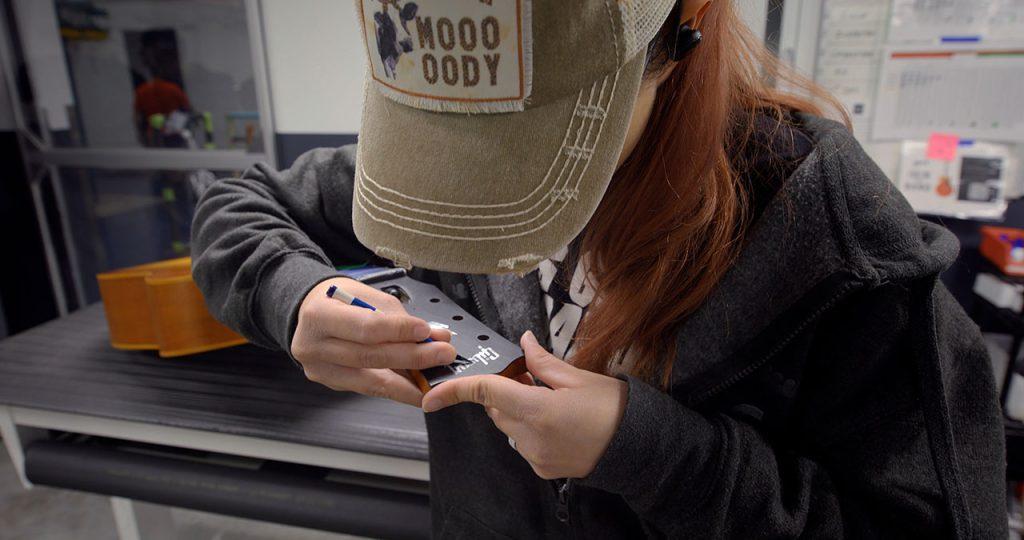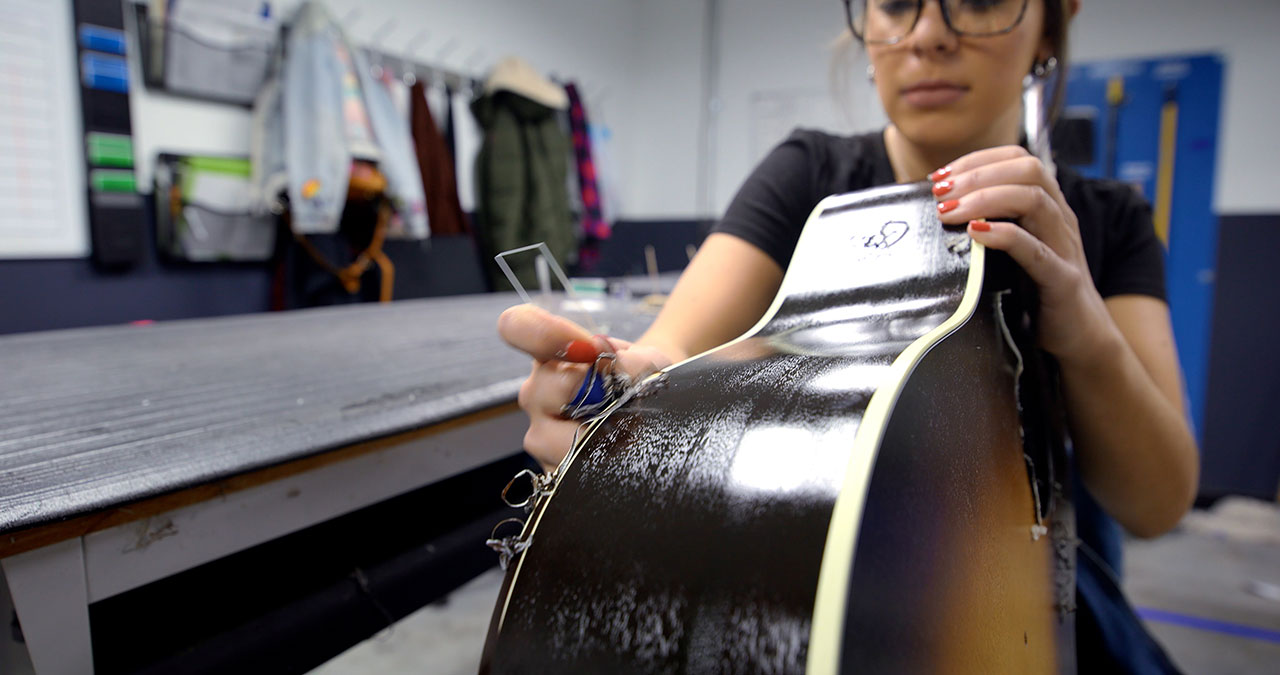Learn about a little-known aspect of Gibson guitar-making in the latest episode of Gibson TV’s “The Process”
Binding scraping is one of those little-known and rarely discussed aspects of the guitar manufacturing process—and the attention to detail is accomplished by hand. In this episode of the Gibson TV series The Process, get an inside look at the hand-intensive steps involved in getting a Gibson guitar through the finishing stages after the application of nitrocellulose lacquer and ready for buffing and final assembly.
You’ll also learn some interesting facts about the original “Gibson Gals” from the 1940s, who were responsible for creating some of Gibson’s most sought-after vintage acoustic guitars.
What is binding scraping?
Gibson guitars are known for their aesthetic details, one of which is the binding that outlines the body and neck of the guitar. The binding adds to the visual appeal and provides a smooth edge where the player’s hands come into contact with the instrument.
Binding scraping on a Gibson guitar is a manual finishing process used to enhance the guitar’s appearance by creating a clean line between the binding and the paintwork. The binding scraping process involves carefully removing any excess paint, stain, or clear-coat finish that may have overlapped on the binding during the spraying of the guitar.

The scraping is done manually with custom blades and other tools, such as glass microscope slides, which serve perfectly for this purpose, allowing the color of the binding to stand out against the color of the guitar body and neck.
The result is a clean, crisp line that defines the contours of the guitar and the edge of the fretboard, showcasing the craftsmanship and attention to detail that Gibson is known for.
Enjoy other episodes of The Process on Gibson TV, and check out the full range from Gibson Acoustic.

